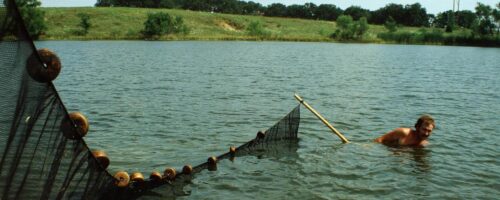Hook and Line Fish Sampling
Hook and line fish sampling combined with summer seine sampling can tell a pond manager quite a bit about the fishery in a pond. Good hook and line samples involve more procedures, more measurements, and more records than normal fishing trips.
Hook and line fish sampling combined with summer seine sampling can tell a pond manager quite a bit about the fishery in a pond. Hook and line sampling is a somewhat dignified phrase for conventional sport fishing. However, good hook and line samples involve more procedures, more measurements, and more records than normal fishing trips.
Fish harvest records provide a fairly good picture of a pond fishery, but hook and line fish sample data can provide even more information. Also, most managers do not have a good fish harvest record history for each pond.
Some other fish sampling techniques, such as electrofishing, can provide more useful information with less labor than hook and line samples, but the equipment is expensive and use of these other techniques by private pond managers is not legal in Oklahoma without a scientific collectors permit.
Quality fishing is the bottom line for most sport fish pond managers. One of the benefits of hook and line sampling is that it actually measures fishing quality as well as measuring parameters such as the quality of the fish stocks. The primary disadvantage of hook and line sampling is it usually requires considerable labor to obtain adequate samples. For fishermen though, it should be a labor of love.
As with any sample technique, it is important to use the same procedures each time so the data is as precise as possible. The following details outline the hook and line sampling procedures used by the Noble Research Institute wildlife and fisheries staff.
- Number 8 hooks baited with earthworms are used to collect bluegill as well as indicate other fish species present.
- Several different types and sizes of artificial lures are used to collect largemouth bass. Small lures, e.g., 1/32 to 1/16 ounce, as well as larger ones are used.
- All fish caught are put in a fish basket for later measurement. A fish basket is used to keep fish alive and healthy so they can be released with minimal harm.
- Fish in baskets are weighed, measured and released at least once every two hours, more often when baskets are relatively full or water temperatures are warm, to minimize harm to the fish
- A form is used to maintain a record of fishing effort including details such as pond name, date, fisherman’s name, bait type and size, length of time that each bait is used, and number of each fish species caught on each bait.
- A form is used to record the species, length, and weight of each fish.
- Visibility through the water and the type of turbidity are recorded on one of the aforementioned forms.
- Samples are collected at the same season of the year, because some parameters such as weight or body condition change throughout the year.
- When possible, a combined annual sample of at least 50 bluegill and 50 largemouth bass is collected. However, this is not always practical due to small pond size, low fish abundance, or too few fishermen. When sample size of 50 each is not practical, the pond should be fished for portions of at least 3 days. A small sample from only 1 or 2 days simply could represent days when fish are not biting well.
Anyone can use this technique to obtain useful information for monitoring adn managing a pond or lake. This data is analyzed to provide useful management information such as fish species composition, catch per unit of effort (number of each fish species caught per man-hour of fishing effort), length-frequency, proportional stock density, and relative weight. These parameters, especially the last two, are used to evaluate population balance and predator-prey balance.


Comment